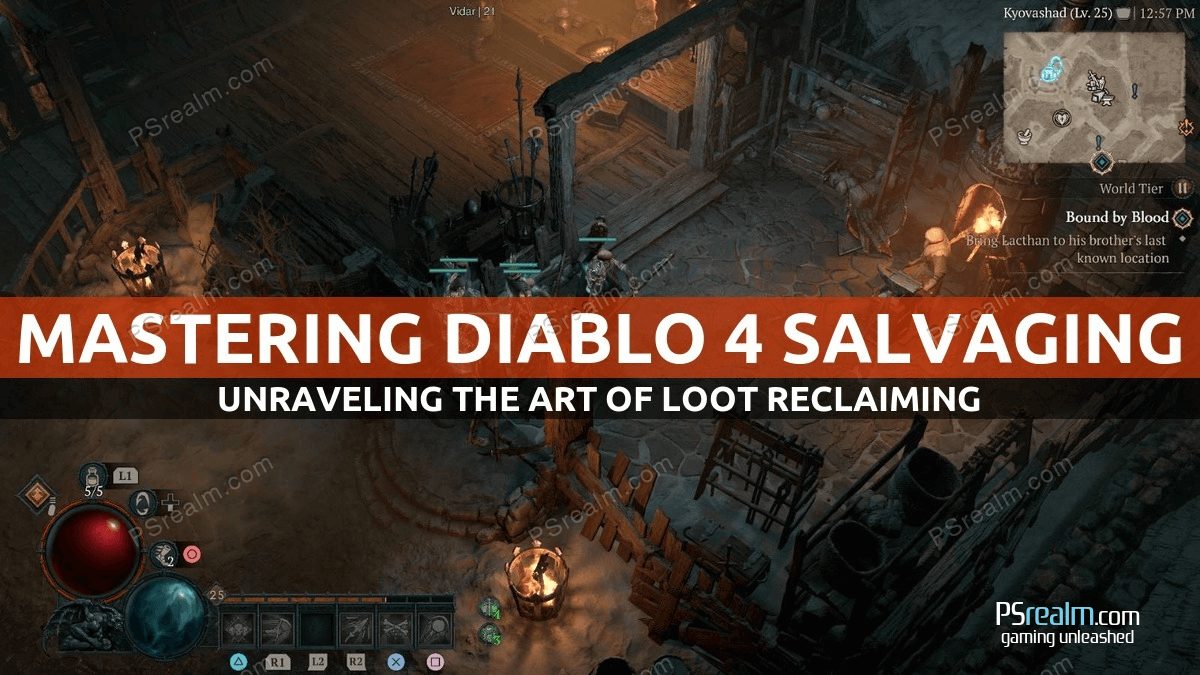In Diablo 4, an essential skill you’ll need to cultivate is knowing how to effectively salvage items. Not only can it help customize your appearance by offering different transmog styles, but it also provides critical crafting materials which are often more valuable than selling the gear. For both newbies and seasoned Diablo players seeking a refresher, this article provides an in-depth guide on the art of salvaging items, with a special emphasis on Legendary items in Diablo 4.
Index:
- A Step-by-Step Guide to Salvaging in Diablo 4
- The Ins and Outs of Salvaging Legendary Items
- Should You Sell or Salvage in Diablo 4?
A Step-by-Step Guide to Salvaging in Diablo 4
While salvaging may seem complex at first, it quickly becomes second nature once understood. Early on, the game doesn’t provide a thorough tutorial on this process, so let’s break it down.
To initiate the salvaging process in Diablo 4, a visit to a blacksmith is necessary. These blacksmiths are conveniently located in various cities and towns, big and small, and are easily recognizable by the hammer and anvil icon on the map.
Once at the blacksmith, you’ll be presented with an array of salvaging options. Here’s a rundown of each:
- All Junk: Salvages all items marked ‘Junk’ in your inventory.
- Common: Salvages all grey items.
- Magic: Salvages all yellow items.
- Rare: Salvages all blue items.
- All Items: Salvages all salvageable items excluding Legendaries.
Items can be marked as junk before visiting the blacksmith, allowing you to clear out unwanted gear rapidly. Any socketed gems will be safely returned upon salvaging, giving you a hassle-free way to retrieve your gems.
If you see ‘unlocks new look on salvage’ in an item’s description, salvaging it will add its style to your transmog collection. Access your transmog looks via the wardrobe available in cities.
The Ins and Outs of Salvaging Legendary Items in Diablo 4
Legendary items are handled a bit differently. These are not included in the standard salvaging options; instead, you must manually select each Legendary item marked with a hammer symbol at the blacksmith to salvage it.
Be mindful when you choose to salvage a Legendary item; a confirmation message will appear, urging you to reconsider. While salvaging Legendary items can yield valuable resources, it’s worth pondering whether it might be more beneficial to store it in your stash for another character or extract its Legendary Aspect.
Should You Sell or Salvage in Diablo 4?
Gold, the primary currency in Diablo 4, is crucial for upgrading, crafting, and managing your loot. You can earn gold from various sources, such as killing enemies and completing missions, but crafting materials are mostly obtained by salvaging gear.
In the early stages of the game, neither gold nor crafting materials are critical, but it’s wise to start accumulating them. Given that crafting materials are scarcer than gold, it’s often more advantageous to salvage your items rather than sell them, at least until you reach the endgame.
Once you surpass Level 50, consider selling your gear instead of salvaging it. However, only salvage Legendary items when you’re sure you no longer need them. Generally, it’s best to stash your Legendaries for different characters and builds or extract their Aspects of Power for creating new Legendary items.
Good luck on your journey in Diablo 4!

